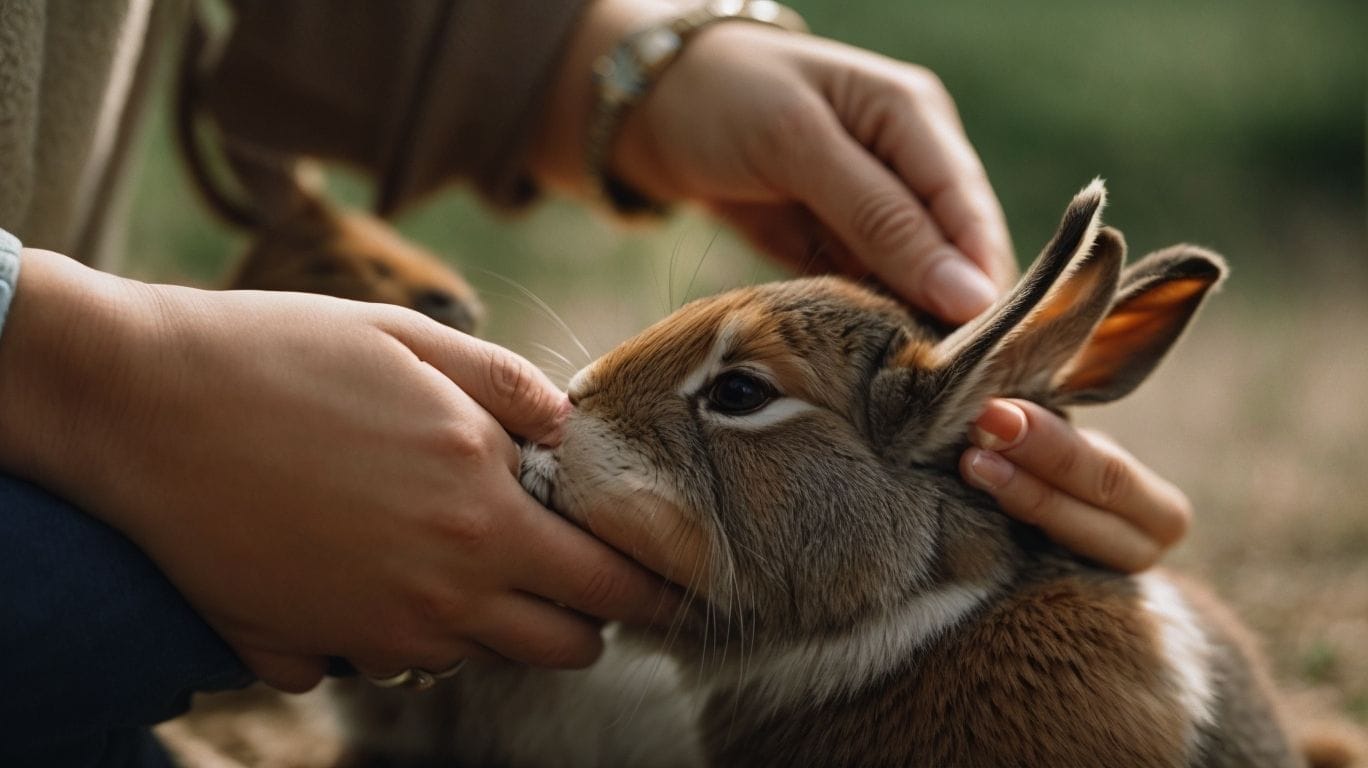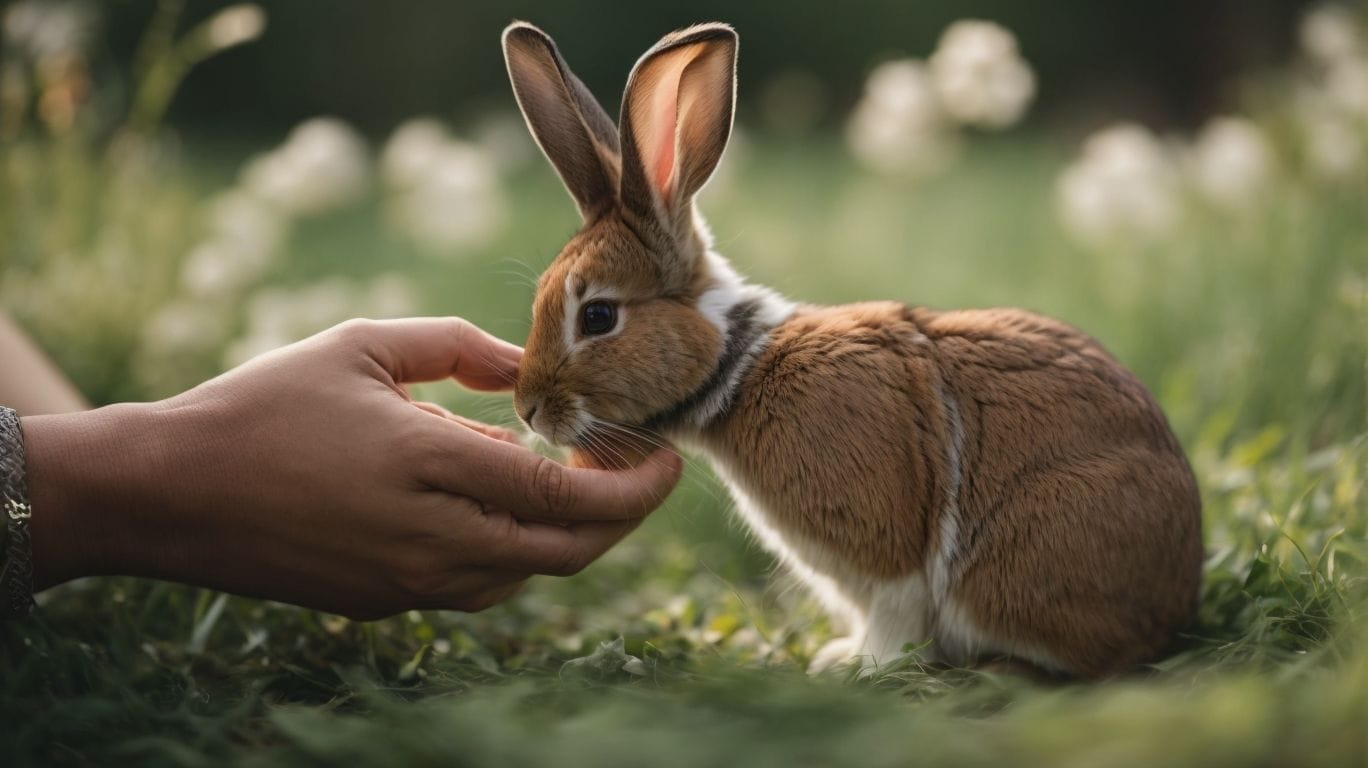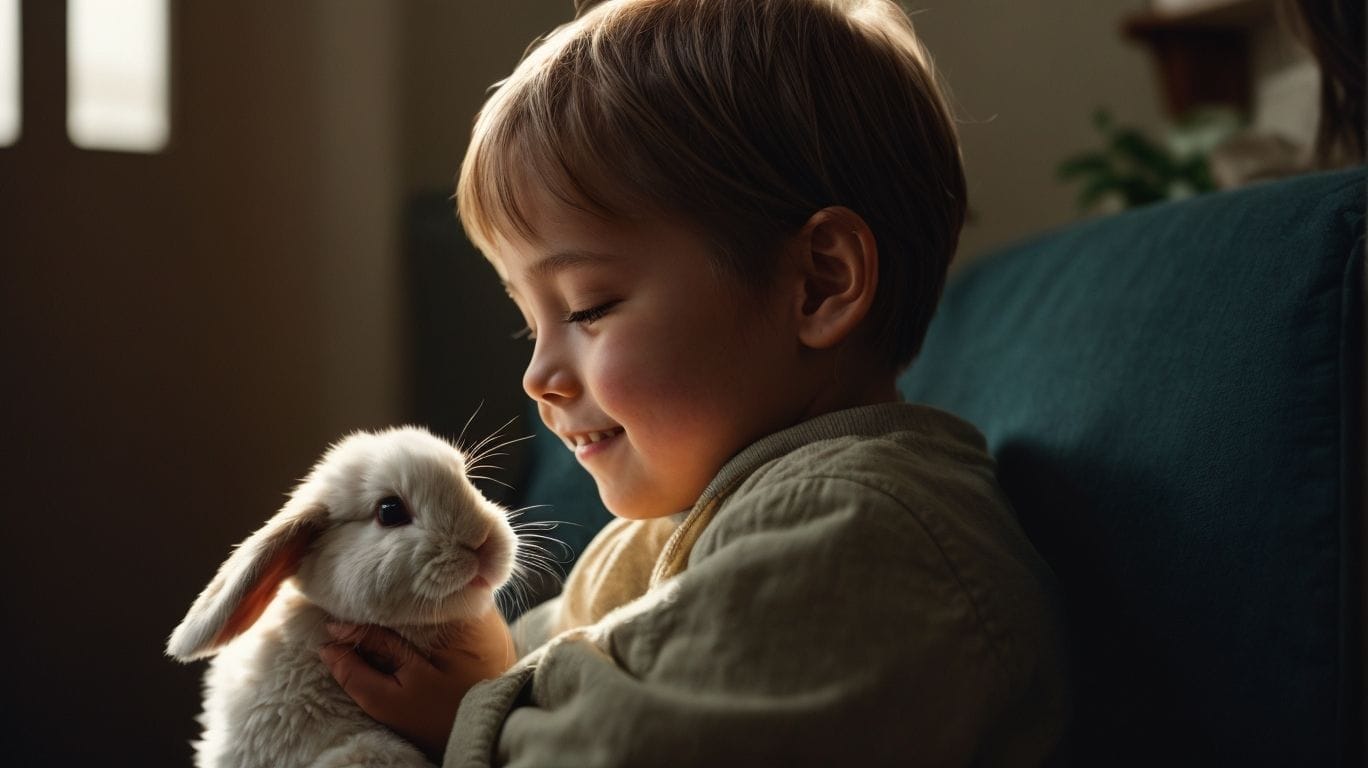Where to Pet Rabbits: A Guide to Finding the Perfect Spot for Bunny Cuddles
When it comes to petting rabbits, finding the right location is essential. Rabbits are social and affectionate animals that thrive in environments where they feel safe and loved. In this article, we will explore different places where you can safely and comfortably pet rabbits, ensuring a positive and enjoyable experience for you and your fluffy friend.
1. Your Home: The most convenient and comfortable place to pet a rabbit is within the familiar surroundings of your own home. Create a cozy and secure space for your bunny, complete with a soft bed, toys, and adequate ventilation. Make sure the area is free from any potential hazards and that your Rabbit feels at ease.
2. Rabbit Petting Zones: Some cities and communities have dedicated petting zones or animal sanctuaries where visitors can interact with rabbits and other small animals. These areas are designed to provide a safe and controlled environment for both humans and rabbits to interact under the supervision of professionals.
3. Petting Farms: Petting farms often include rabbits as part of their collection of friendly animals. These farms allow visitors to pet, feed, and learn about different types of domesticated rabbits. It’s a great opportunity for children and families to interact closely with rabbits and foster a deeper appreciation for these adorable creatures.
4. Rescue Centers and Animal Shelters: Rescue centers and animal shelters are excellent places to find rabbits needing love and attention. These organizations typically have experienced staff who can guide you through the process of petting rabbits and help you find the perfect match for your home and lifestyle.
5. Friends and Family with Rabbits: If you have friends or family members who own rabbits, they may be more than willing to let you pet their furry companions. Spending time with rabbits owned by people you trust can be a wonderful opportunity to learn more about their care and proper handling.
6. Rabbit Cafes: In some countries, there are rabbit cafes where customers can enjoy coffee while interacting with friendly rabbits. These establishments provide a calm and relaxed atmosphere for visitors to pet and socialize with rabbits, making it a unique and enjoyable experience.
By exploring these different places to pet rabbits, you can find the perfect spot to bond with these lovely creatures. Remember to approach rabbits with kindness, gentleness, and respect for their boundaries, ensuring a positive and meaningful interaction for you and the Rabbit.
Key takeaway:
- Finding the “sweet spot” for petting: Rabbits have certain areas that they enjoy being petted, such as the forehead, behind the ears, and along their back. Discovering these spots will help create a positive and enjoyable interaction with your pet rabbit.
- Building trust and establishing a bond: By spending quality time with your Rabbit, offering treats, and gently handling them, you can develop trust and establish a bond. This will enhance the relationship and create a loving connection between you and your Rabbit.
- Creating a neutral area for interactions: When introducing a new rabbit or interacting with a rabbit for the first time, it is important to provide a neutral space where they feel safe and comfortable. This can help reduce stress and promote positive interactions.
Understanding Rabbit Behavior and Care

Photo Credits: Petnarnia.Com by Nathan Torres
Understanding rabbit behavior and care dives into the fascinating world of our furry friends. From dominance-based behaviors to creating neutral areas for interactions, we’ll explore how to handle and interact with pet rabbits while respecting their sensitive ears. Get ready to uncover the secrets behind establishing a strong bond with your adorable hoppy companion!
Dominance-based rabbit behaviors
To address dominance-based rabbit behaviors, it is important to understand that territorial marking, aggression, and mounting can all be a part of these behaviors. Properly comprehending these behaviors is crucial for providing care and maintaining a harmonious environment for your furry friend. To effectively tackle dominance-based behaviors, consider the following tips:
- Establish clear boundaries and territory for your Rabbit.
- Ensure your Rabbit has plenty of space to roam and exercise.
- Provide enough hiding spots and separate areas for multiple rabbits.
- Implement positive reinforcement training to redirect unwanted behaviors.
- If the dominant behaviors persist, it is advisable to seek professional advice.
Pro-tip: Neutering or spaying your Rabbit can be beneficial in reducing dominance-related behaviors.
Creating a neutral area for interactions
When interacting with a rabbit, it is important to create a neutral area for interactions. This will help ensure a positive experience for you and your furry friend. Here are some steps to follow when creating this neutral area:
| Step | Description |
|---|---|
| 1. Choose a quiet and calm space: | Select a peaceful area where the Rabbit can feel comfortable and secure. This will help them relax and be more open to interaction. |
| 2. Neutralize scents: | Make sure to remove any strong scents from the area. Rabbits rely heavily on their sense of smell, so eliminating scents of other animals or cleaning agents is crucial. |
| 3. Remove hazards: | Take the time to check for and remove any potential hazards in the area. Electrical cords, sharp objects, or small items the Rabbit could chew on or ingest should be eliminated to ensure their safety. |
| 4. Provide hiding spots: | Place tunnels, cardboard boxes, or other hiding spots in the neutral area. This will give the Rabbit a place to retreat if they feel scared or overwhelmed during interactions. |
| 5. Respect the Rabbit’s boundaries: | It is important to give the rabbit space and allow them to approach and interact on their terms. Avoid forcefully handling or restraining the Rabbit, which can cause stress or fear. |
By following these steps and creating a neutral interaction area, you can foster a safe and comfortable environment for you and your Rabbit.
Handling a pet rabbit
Handling a pet rabbit requires a gentle and cautious approach to ensure their comfort and well-being. Here are some steps to handle a pet rabbit safely:
| 1 | Approach the Rabbit slowly and calmly to prevent startling them. |
| 2 | Use both hands to support the Rabbit’s body, with one hand supporting the hindquarters. |
| 3 | Lift the Rabbit close to your body to make them feel secure. |
| 4 | Avoid picking up the Rabbit by their ears, which can cause injury. |
| 5 | Once you have the Rabbit in your arms, speak softly and move slowly to help them feel at ease. |
Remember, each Rabbit is different, and it’s important to observe their body language and adjust your handling techniques accordingly. By handling a pet rabbit with care and respect, you can foster a strong bond and create a positive experience for both of you.
Interacting with a rabbit’s sensitive ears
Interacting with a rabbit’s sensitive ears requires gentle handling and understanding of their sensitivities. When petting a rabbit, it is important to avoid touching their ears directly as it may cause discomfort or anxiety. Instead, it is recommended to focus on stroking their head, chin, or back. It is crucial to be mindful of any signs of discomfort, such as twitching or flattening of the ears. Offering treats or engaging in playtime can also be a positive and enjoyable way to interact with rabbits without overwhelming their sensitive ears. By respecting and being considerate of their sensitivities, you can foster a trusting and enjoyable relationship with your furry friend.
Rabbit Health and Safety Tips

Photo Credits: Petnarnia.Com by Bobby Martinez
Discover the secrets to maintaining proper rabbit vision, preventing traumatizing experiences, and ensuring a safe and secure front end. Learn how to promote the well-being and happiness of your furry friends, backed by expert advice and proven techniques. Say goodbye to common rabbit health concerns and create a safe environment that supports their physical and emotional needs. Get ready because your Rabbit’s health journey starts here!
Maintaining proper rabbit vision
Maintaining proper rabbit vision is crucial for the overall health and well-being of your pet. Here are a few tips to ensure their vision remains in good condition:
1. Regular check-ups: Schedule routine visits to the vet to detect any vision problems early on and address them promptly.
2. Proper nutrition: Feed your Rabbits a balanced diet of vitamins and nutrients to support their eye health and maintain proper rabbit vision.
3. Cage setup: Ensure their living environment has adequate lighting and is free from hazards that could potentially harm their eyes, which is essential in maintaining proper rabbit vision.
4. Observation: Monitor your Rabbit for any signs of eye irritation, discharge, or cloudiness, and seek veterinary care if any issues arise to maintain proper rabbit vision.
By following these steps, you can help maintain and contribute to their overall well-being by maintaining proper rabbit vision.
Preventing traumatizing experiences
To prevent traumatizing experiences for your pet rabbit, follow these steps:
- Handle carefully: Approach your Rabbit calmly and gently, avoiding sudden movements or loud noises.
- Provide a safe environment: Remove any potentially harmful objects or hazards from your Rabbit’s living area to reduce the risk of accidents.
- Minimize stress: Avoid overcrowding or overwhelming your Rabbit with too much handling or social interaction.
- Take it slow: Gradually introduce new experiences to your Rabbit, such as new surroundings or other animals, to prevent overwhelming and traumatic situations.
- Respect their boundaries: Pay attention to your Rabbit’s body language and cues, and give them space when they show discomfort or fear.
By following these steps, you can prevent traumatizing experiences and create a safe and positive environment for your Rabbit.
Ensuring a safe and secure front-end
When it comes to ensuring a safe and secure front end for your Rabbit, there are a few steps you can take:
- Secure their living area: Make sure your Rabbit’s cage or enclosure is escape-proof, with sturdy walls and a secure door or opening.
- Remove hazards: Remove any potential hazards or dangerous items from your Rabbit’s environment, such as wires, toxic plants, or small objects they could swallow.
- Supervise outdoor time: If your Rabbit is allowed outdoor time, supervise them closely to prevent escapes or interactions with predators.
- Provide hiding spots: Offer hiding spots in their living area so your Rabbit can retreat to a safe space if they feel scared or threatened.
Pro-tip: Regularly inspect your Rabbit’s living area and make necessary repairs or adjustments to ensure their front end remains safe and secure.
Encouraging Responsible Rabbit Ownership

Photo Credits: Petnarnia.Com by Brandon Gonzalez
When it comes to being the best rabbit parent, responsible ownership is key. In this section, we’ll dive into the importance of fostering responsible rabbit ownership. We’ll explore how adopting from a rescue rather than buying from a pet store can make a difference. We’ll also uncover the benefits of educating yourself and asking the right questions to ensure the well-being of your furry friend. We’ll shed light on promoting responsible breeding practices for a sustainable and ethical rabbit community. Let’s hop into it!
Adopting from a rescue instead of buying from a pet store
When considering getting a pet rabbit, it is advisable to adopt from a rescue instead of buying from a pet store. Here are a few reasons why adopting from a rescue is a better option:
- Save a life: By adopting from a rescue, you give a second chance to a needy rabbit, providing them with a loving home.
- Health and behavior evaluation: Rescue organizations often thoroughly evaluate the health and behavior of rabbits before adoption, ensuring they are ready to be placed in a new home.
- Support for rescue organizations: By adopting from a rescue, you help support their efforts in rescuing and caring for abandoned or neglected rabbits.
- Lower cost: Adoption fees are typically lower than buying a rabbit from a pet store, making it a more affordable option.
- Prevention of overpopulation: Adopting a rescue helps reduce the demand for rabbits bred in a pet store, which can contribute to overpopulation.
Educating yourself and asking questions
Research and educating yourself are important steps in becoming a responsible rabbit owner. Take the time to learn about rabbits’ physical and psychological needs, including their diet, housing requirements, and social behavior. Veterinary Care is also crucial, so find a knowledgeable veterinarian experienced with rabbits and consult them for routine check-ups, vaccinations, and health concerns.
Where to Pet Rabbits?
In addition, connecting with other rabbit owners and joining online forums or local groups can provide valuable insights. This way, you can share information, seek advice, and learn from experienced individuals, which is another way of educating yourself. Don’t hesitate to ask questions about bunny care, behavior, or health, as seeking guidance from experts and experienced rabbit owners can give you valuable insights.
By educating yourself and asking questions, many rabbit owners have created a nurturing environment for their furry friends. This ensures their well-being and helps to build strong bonds of love and trust. Remember, educating yourself and asking questions is vital in providing the best care for your Rabbit.
Promoting responsible breeding practices
Promoting responsible breeding practices is crucial for ensuring the health and well-being of rabbits. This includes advocating for adoption from rescues instead of buying from pet stores. By adopting, you give a loving home to a rabbit in need and help reduce overpopulation. Educating yourself about rabbit genetics, health issues, and proper care is also important. Responsible breeders prioritize the well-being of their animals and work to produce healthy and genetically sound rabbits. They should also be knowledgeable about proper nutrition, exercise, and socialization. Promoting responsible breeding practices allows us to improve the overall welfare of rabbits and prevent unnecessary suffering.
Fostering a Positive and Loving Relationship with Your Rabbit

Photo Credits: Petnarnia.Com by Billy Moore
Fostering a deep and loving connection with your Rabbit is key to a happy and harmonious relationship. Discovering your Rabbit’s “sweet spot” for petting, sharing adorable pictures and experiences, and establishing trust to build an unbreakable bond – these are the essential elements we’ll be exploring in this section. So, explore the secrets of connecting with your furry friend on a new level!
Finding the Rabbit’s “sweet spot” for petting
To find the Rabbit’s “sweet spot” for petting, it’s crucial to understand their body language and preferences. Some rabbits enjoy being petted on their head and behind their ears, whereas others enjoy gentle strokes on their back or sides. By observing your Rabbit’s reactions and body language, you can determine their preferred spot for petting. It’s best to avoid sensitive areas like their feet or tail, as rabbits usually dislike touching them. Additionally, by building trust and establishing a bond with your Rabbit, you will also discover their comfort zone for petting.
Sharing cute pictures and experiences
“One rabbit owner, Jane, found that sharing cute pictures and experiences of her Rabbit on Instagram became a delightful way to connect with other rabbit owners and animal lovers worldwide. As her following grew, she not only received feedback and heard about others’ experiences but also formed meaningful connections within the online rabbit community. Jane even went on to organize rabbit meet-ups and share helpful tips with her newfound friends. This virtual network became a lifeline for Jane, providing support, friendship, and a safe space to express her love for rabbits. Through the power of cute pictures and shared experiences, Jane not only spread joy but also inspired others to appreciate the beauty and companionship these wonderful animals bring into our lives.”
Building trust and establishing a bond
Building trust and bonding with your Rabbit is crucial for a positive and loving relationship. Here are some tips to help you gradually build a strong bond with your Rabbit based on trust, love, and mutual respect:
| 1. | Spend quality time together: | Regular interaction and playtime can help your Rabbit feel comfortable and trust you. |
| 2. | Offer treats and rewards: | Use treats as positive reinforcement to reward good behavior and create a positive association. |
| 3. | Be patient and gentle: | Approach your Rabbit calmly and avoid sudden movements or loud noises that might scare them. |
| 4. | Respect their boundaries: | Allow your Rabbit to approach you and initiate contact. Avoid forcing them into interactions they are not comfortable with. |
| 5. | Establish a routine: | Rabbits thrive on consistency, so establishing a daily routine can help them feel secure and build trust. |
Following these guidelines, you can gradually build a strong bond with your Rabbit based on trust, love, and mutual respect. Remember, every Rabbit is unique, so take the time to understand their needs and preferences. Enjoy the journey of building a lasting connection with your furry friend!
Some Facts About Where to Pet Rabbits:
- ✅ Rabbits can be pets at animal shelters and rescue centers. (Source: Rabbits community)
- ✅ Some petting zoos and farms allow visitors to interact with rabbits. (Source: Rabbits community)
- ✅ Rabbit shows and exhibitions often have areas where rabbits can be petted. (Source: Rabbits community)
- ✅ Some rabbit breeders may allow limited petting of their rabbits. (Source: Rabbits community)
- ✅ Certain pet stores may have rabbits available for petting and interaction. (Source: Rabbits community)


